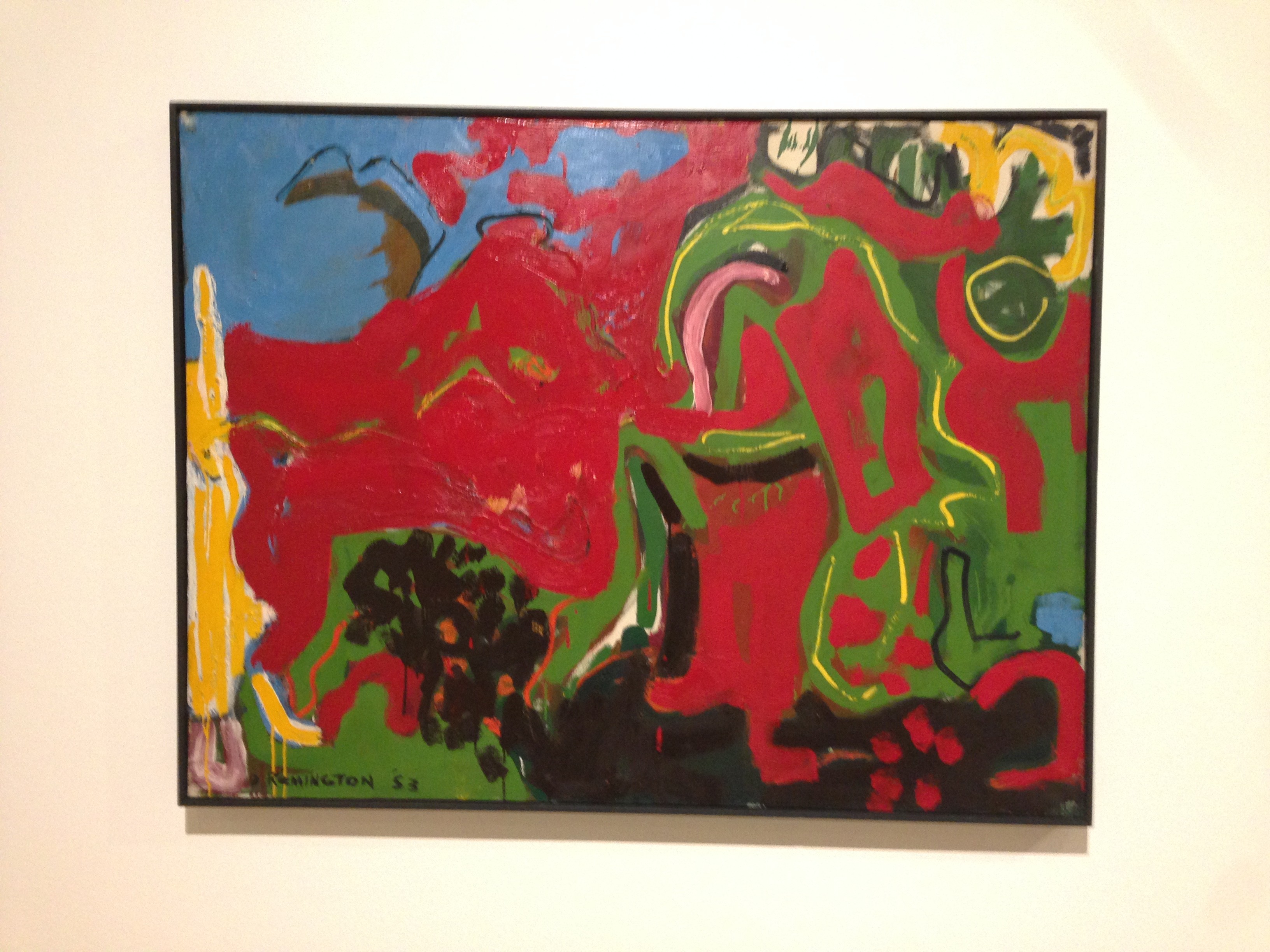 All kinds of thrilling art awaits concertgoers in Coachella Valley, right through Stagecoach. Across the desert and up into the hills are site-specific installations for the inaugural Desert X show. And contained within the soaring walls of the Palm Springs Art Museum is an exhibit worth the trip to the mid-century-modern mecca all on its own.
All kinds of thrilling art awaits concertgoers in Coachella Valley, right through Stagecoach. Across the desert and up into the hills are site-specific installations for the inaugural Desert X show. And contained within the soaring walls of the Palm Springs Art Museum is an exhibit worth the trip to the mid-century-modern mecca all on its own.
Curated by Gwen Chanzit at Denver Art Museum, “Women of Abstract Expressionism” has traveled to Palm Springs bringing 50-plus paintings by 12 women buzzing with color and energy of movement—extraordinary works for any gender.
If it’s past noon when you get to Palm Springs, head straight to the Ace Hotel & Swim Club to pick up a map at the Desert X Hub, which is located behind the pool that’s jammed with hipster families. No matter where you find yourself in Coachella Valley, one of the installations won’t be too far off. The map has times each art work is available for perusal, and this map will help digitally with GPS coordinates. Before leaving the Hub, find the bright yellow post card that will give you a discount at King’s Highway at the front of the hotel, where you should eat while planning your adventures.
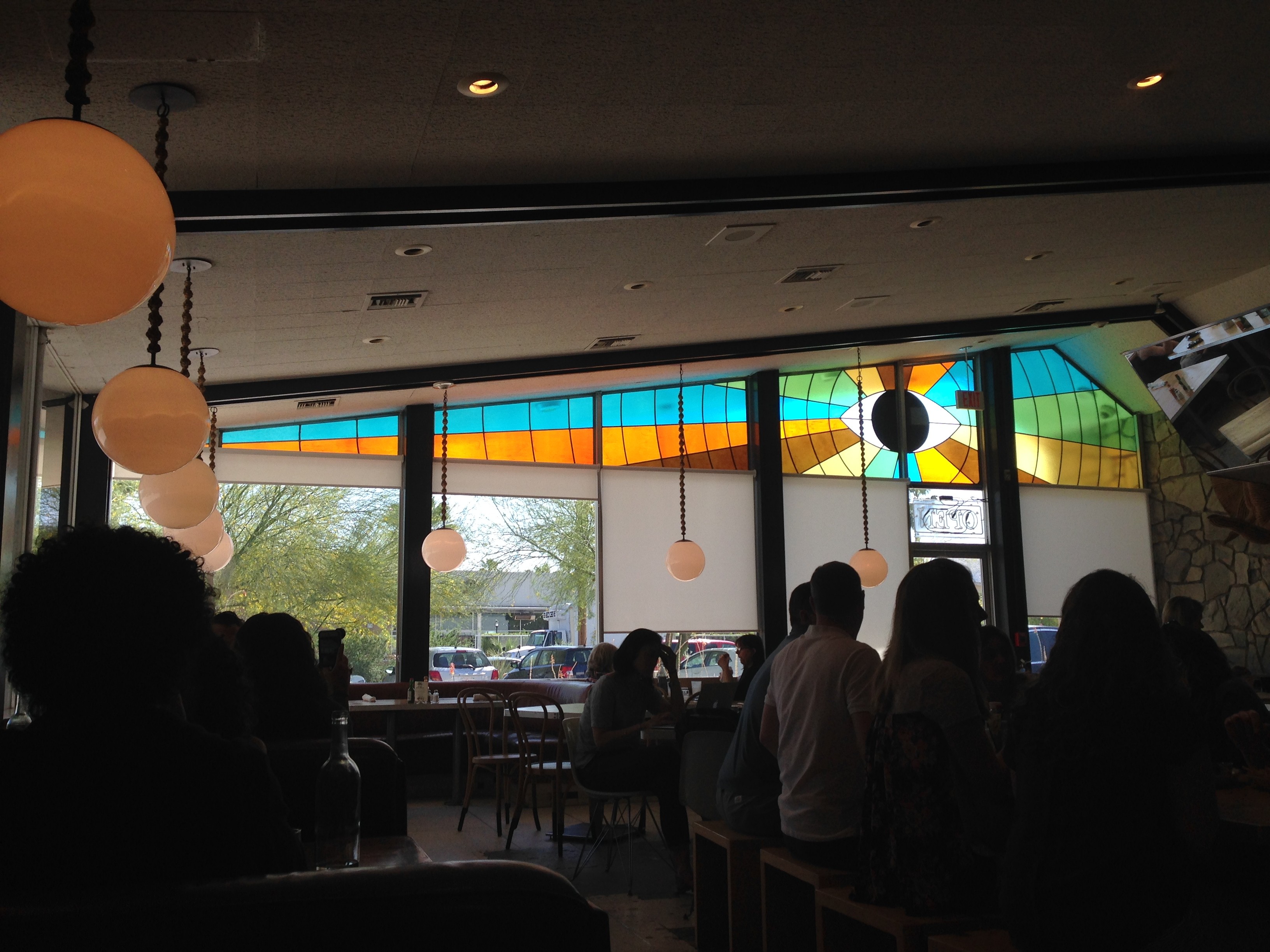 It’s easy to locate Jeffrey Gibson’s ALIVE!, a windmill blade rising up from the museum sculpture garden. But Mirage by Doug Aitken is generating all the buzz; it’s a selfie-takers jackpot. As splendid as it is, there’s no mention amid the clatter that Aitken’s mirror-clad ranch house with a view is such a close imitation of 2013’s Lucid Stead by Phillip K Smith III, who also has a site-specific piece in Desert X called Circle of Land and Sky, as magical to walk through as his 1/4 Mile Arc at Main Beach in Laguna last year.
It’s easy to locate Jeffrey Gibson’s ALIVE!, a windmill blade rising up from the museum sculpture garden. But Mirage by Doug Aitken is generating all the buzz; it’s a selfie-takers jackpot. As splendid as it is, there’s no mention amid the clatter that Aitken’s mirror-clad ranch house with a view is such a close imitation of 2013’s Lucid Stead by Phillip K Smith III, who also has a site-specific piece in Desert X called Circle of Land and Sky, as magical to walk through as his 1/4 Mile Arc at Main Beach in Laguna last year.
Lita Albuquerque’s hEarth is situated in an oasis retreat, where presidential summits and exchanges of scientific ideas take place. There, on a circle of white sand is a reclining blue figure with her ear to the ground, listening. Hidden in the surrounding trees are speakers, providing more takes on Albuquerque’s quest to embody listening. It takes 8 hours to see all the Desert X works via two, four-hour guided minivan tours offered on weekends. Or go it alone.
A less rugged but no less thrilling art adventure hangs inside the museum—though a personal response to nature is often a starting point for these paintings. “I would rather leave nature to itself,” stated Joan Mitchell. “It is quite beautiful enough as it is. I do not want to improve it … I could certainly never mirror it. I would like more to paint what it leaves me with.” Each of the 12 painters is introduced with a quote on process; all 12 add up to a dynamic definition of Abstract Expressionism. No slouch with color herself, Mary Abbott’s All Green is a reflection of her frequent visits to Haiti and the Virgin Islands. For Abbott, green is less about jungle foliage or the color itself, than about light’s infinite variations.
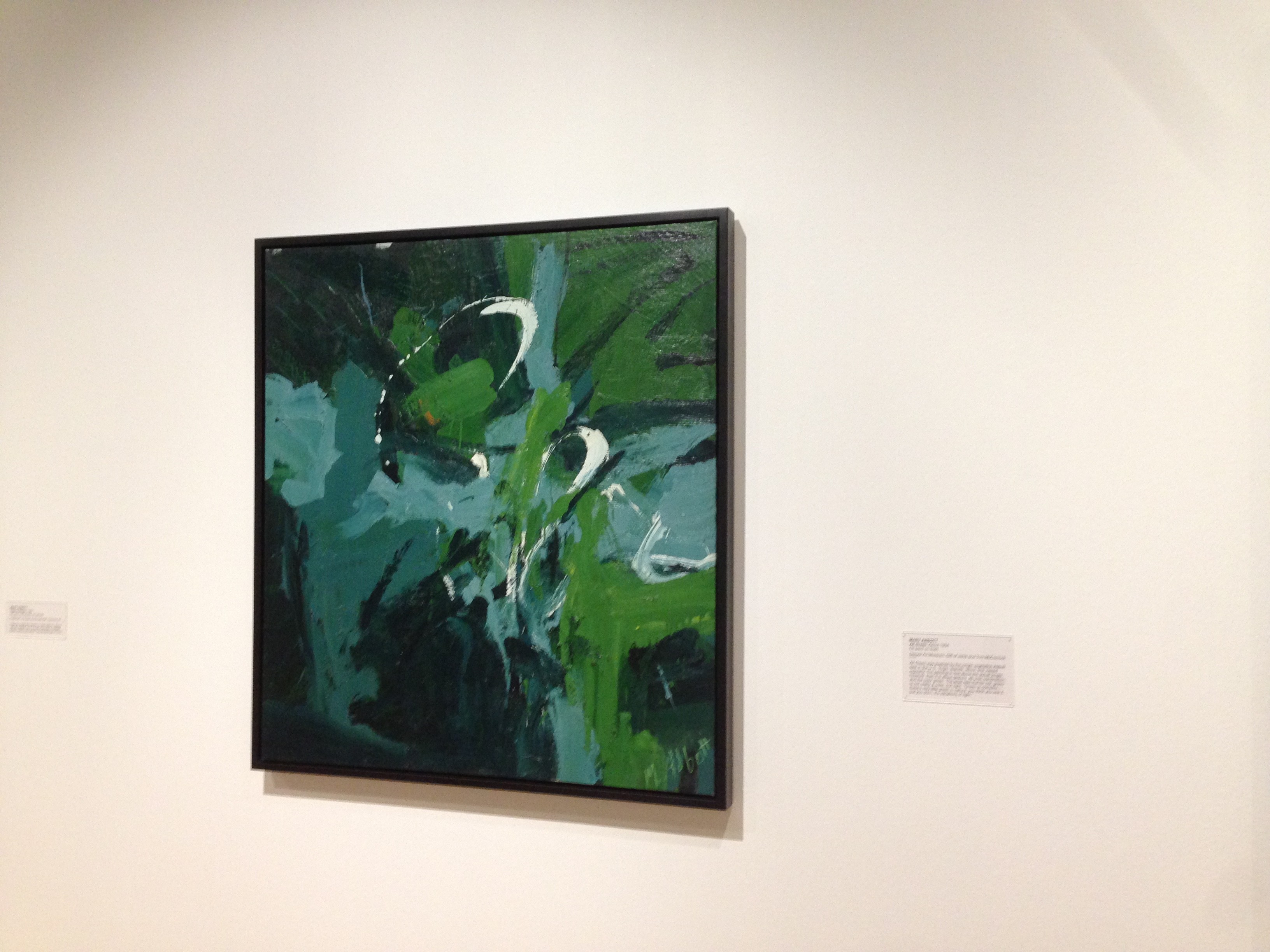 Experimentation with artistic process, a visceral response to some aspect of the world—a sound, a precipice, a first bullfight, Martha Graham dancing seen live—and the freely expressed gestures with which paint is applied are central to this post-WWII genre. “I do not describe my subject matter—I want to distill it until I have its essence,” said Grace Hartigan. Helen Frankenthaler furthers the definition: “A really good picture looks as if it’s happened at once. It’s an immediate image.” That immediacy buzzes in the way paint is put to canvas, capturing a liberation from the confines of painting replicas of nature in painstaking detail, with a precisely held brush and constrained body. That immediacy implies action, and though Jackson Pollack’s method spawned the term, many Abstract Expressionists made Action Paintings.
Experimentation with artistic process, a visceral response to some aspect of the world—a sound, a precipice, a first bullfight, Martha Graham dancing seen live—and the freely expressed gestures with which paint is applied are central to this post-WWII genre. “I do not describe my subject matter—I want to distill it until I have its essence,” said Grace Hartigan. Helen Frankenthaler furthers the definition: “A really good picture looks as if it’s happened at once. It’s an immediate image.” That immediacy buzzes in the way paint is put to canvas, capturing a liberation from the confines of painting replicas of nature in painstaking detail, with a precisely held brush and constrained body. That immediacy implies action, and though Jackson Pollack’s method spawned the term, many Abstract Expressionists made Action Paintings.
“For my own work,” said Frankenthaler, whose “stain” process influenced other artists until the technique got a name: Color Field. “When a picture looks labored and overworked … I usually throw these out, though I think very often it takes ten of those over-labored efforts to produce one really beautiful wrist motion that is synchronized with your head and heart, and therefore it looks as if it were born in a minute.” In Elaine de Kooning’s Bullfight, I see the intense sweeps of paint made by the painter as one with the arms of the matador and his cape. The spectators, the blood, the stadium, the bull, all appear in the colors and large scale of the piece, with a little help from the title.
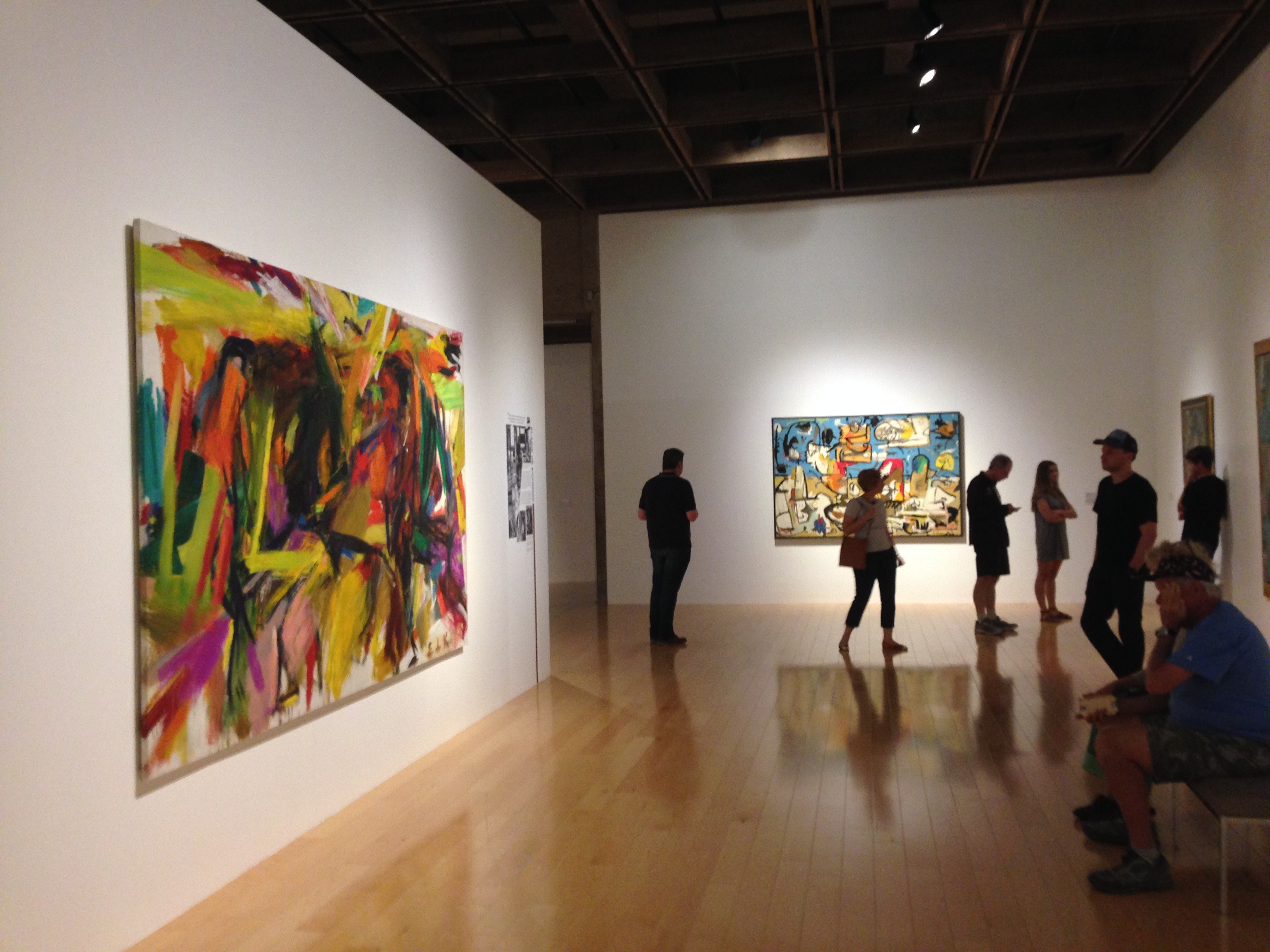 Though Perle Fine’s two black and white paintings shown are excellent, her Summer I reflects her desires with gusto: “I like to light up a canvas with color; I like to make it shout or whisper; I like to make it spin … or make forms melt softly over the whole picture.” An all-over composition is typical for the genre, and in the earlier paintings of Frankenthaler you see a horizon line, which disappears as she moves into her color fields. With Lee Krasner, the Cubist influence shows until she hits full-on action. In the video created for the exhibition we see the studio where Krasner liked to pin up her canvases, layers of paintings past evident on the walls and ceiling; her husband Pollack’s are splattered all over the floor.
Though Perle Fine’s two black and white paintings shown are excellent, her Summer I reflects her desires with gusto: “I like to light up a canvas with color; I like to make it shout or whisper; I like to make it spin … or make forms melt softly over the whole picture.” An all-over composition is typical for the genre, and in the earlier paintings of Frankenthaler you see a horizon line, which disappears as she moves into her color fields. With Lee Krasner, the Cubist influence shows until she hits full-on action. In the video created for the exhibition we see the studio where Krasner liked to pin up her canvases, layers of paintings past evident on the walls and ceiling; her husband Pollack’s are splattered all over the floor.
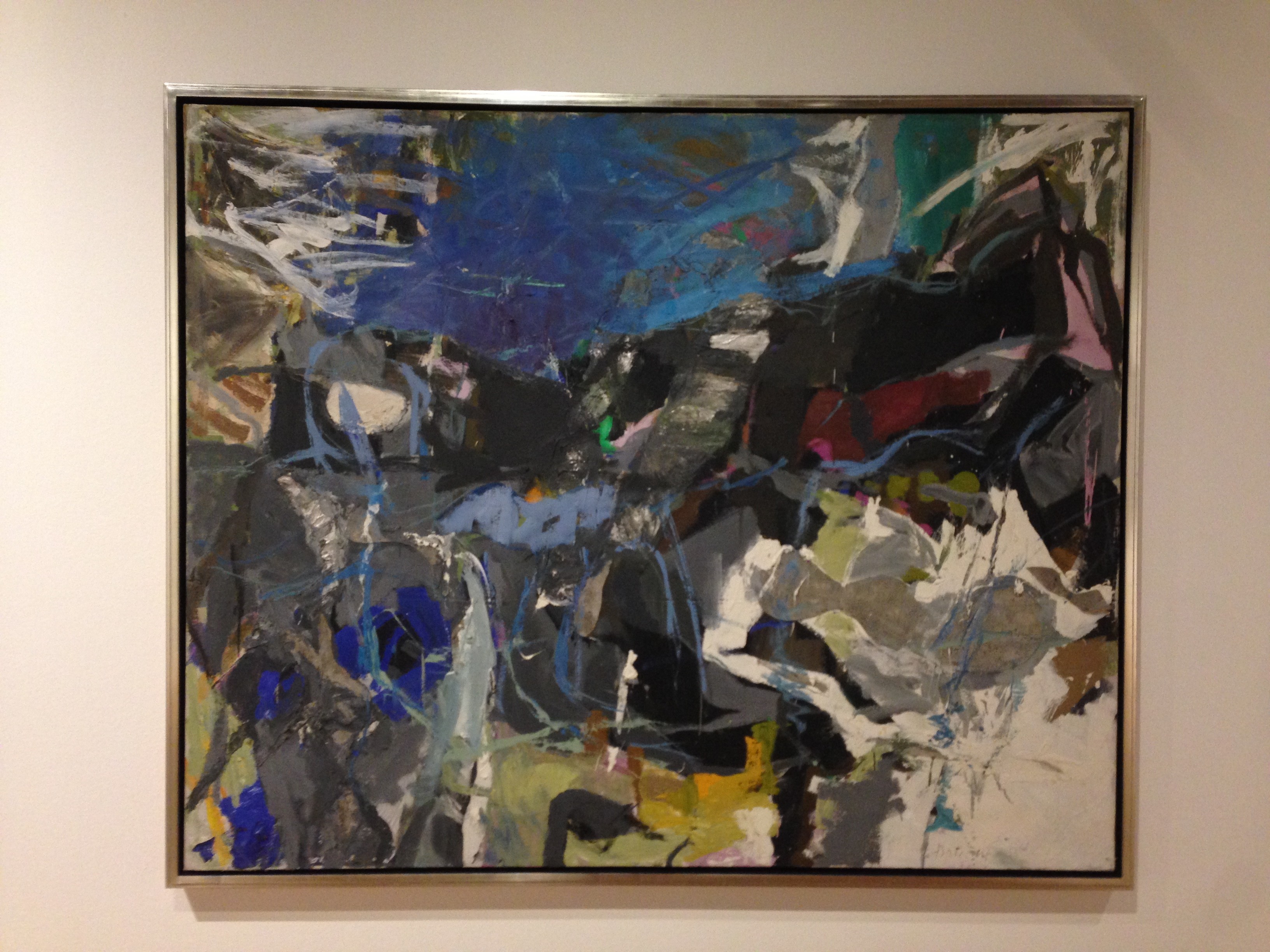 “I knew I was doing something new,” said Sonia Gechtoff, “and the more I worked at it the more I was convinced I was doing something fresh, something quite different from other artists. I never lost that feeling. I still feel that way.” Gechtoff, born in 1926 and still alive, painted in San Francisco as the Beat Generation was emerging in North Beach. She claims being 3,000 miles away from the New York scene, so dominated by big names and testosterone, was a huge advantage to her and her fellow west coast artists in the exhibit, Deborah Remington and Jay DeFeo. “Why I progressed so rapidly, I had none of the hangups that the women in NY had to deal with.” Chanzit claims that sexism and the dominance of the heroic paint-splattered man didn’t exist in the San Francisco scene.
“I knew I was doing something new,” said Sonia Gechtoff, “and the more I worked at it the more I was convinced I was doing something fresh, something quite different from other artists. I never lost that feeling. I still feel that way.” Gechtoff, born in 1926 and still alive, painted in San Francisco as the Beat Generation was emerging in North Beach. She claims being 3,000 miles away from the New York scene, so dominated by big names and testosterone, was a huge advantage to her and her fellow west coast artists in the exhibit, Deborah Remington and Jay DeFeo. “Why I progressed so rapidly, I had none of the hangups that the women in NY had to deal with.” Chanzit claims that sexism and the dominance of the heroic paint-splattered man didn’t exist in the San Francisco scene.
“Painting for me, when it ‘really’ happens is as miraculous as any natural phenomenon.” states Krasner, whose work opens the show. Maybe being married to Pollack overshadowed her, he overshadowed everyone, but she had long been painting before the marriage (murals with the WPA!), and she continued through it and for the decades of breakthrough work after his death. Looking at the dates all the works were created is proof enough that these 12 women are not second-generation Abstract Expressionists, but OGs themselves.
“I just needed a color, or something, to get me started,” said Krasner. I’ve always wondered why umber dominates a lot of Abstract Expressionist paintings. Plagued by insomnia in a studio that got little daylight anyway, Krasner didn’t like to use colors in artificial light. So umber it was. None of her pieces disappoint. Like looking into infinity while acutely aware of surface.
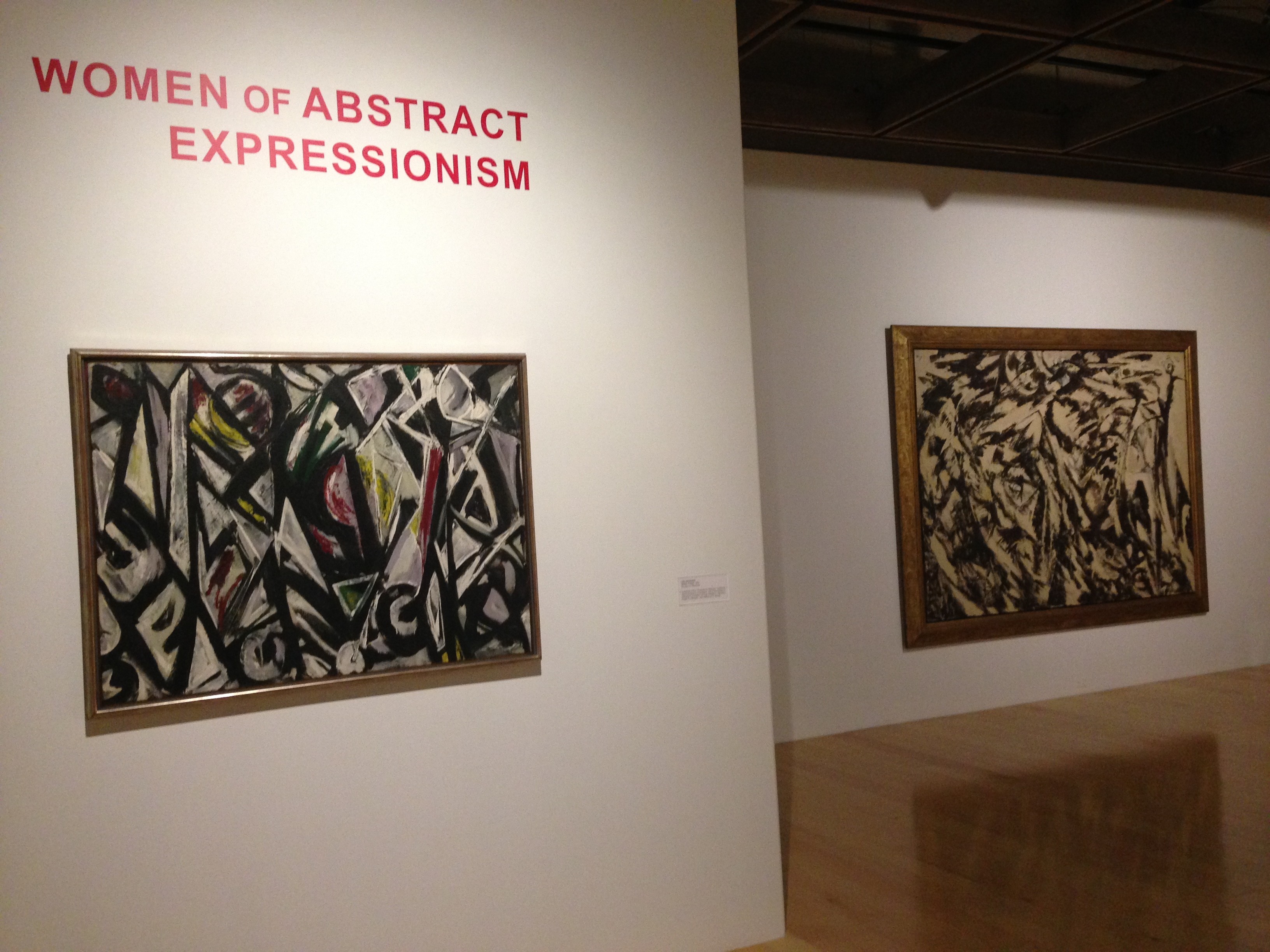
De Kooning was also married to an Abstract Expressionist painter, and she used him as a subject. You can see her evolution toward abstraction in two portraits of Willem in the show. Her work is big and bold AF.
The art book for the show reveals many more female painters from the era that didn’t make it into this powerhouse exhibit. Chanzit, an art professor as well as curator of modern art, had never even seen Fine’s work until 2008, which is when she got the idea for “Women of Abstract Expressionism.” Some women-only art shows are gimmicky, essentially just paying lip service. But this exhibit and the brilliant “In Wonderland: The Surrealist Adventures of Women Artists in Mexico and the United States” at LACMA in 2012 are vital because, finally, you get to see beloved paintings that you’d only ever seen in books and, best of all, discover the genius of artists you had no idea existed.
The quotes from the 12 artists in “Women in Abstract Expressionism” may add up to a definition of this very American genre, but Elaine De Kooning’s advice to artists is great for all: “Don’t over-dwell, or you’ll lose the magic.”
“Women of Abstract Expressionism” at Palm Springs Art Museum, 101 Museum Drive, Palm Springs, (760) 322-4800; www.psmuseum.org. Free on Thursdays after 4 p.m. Through May 28. Desert X, throughout Coachella Valley. Through April 30.
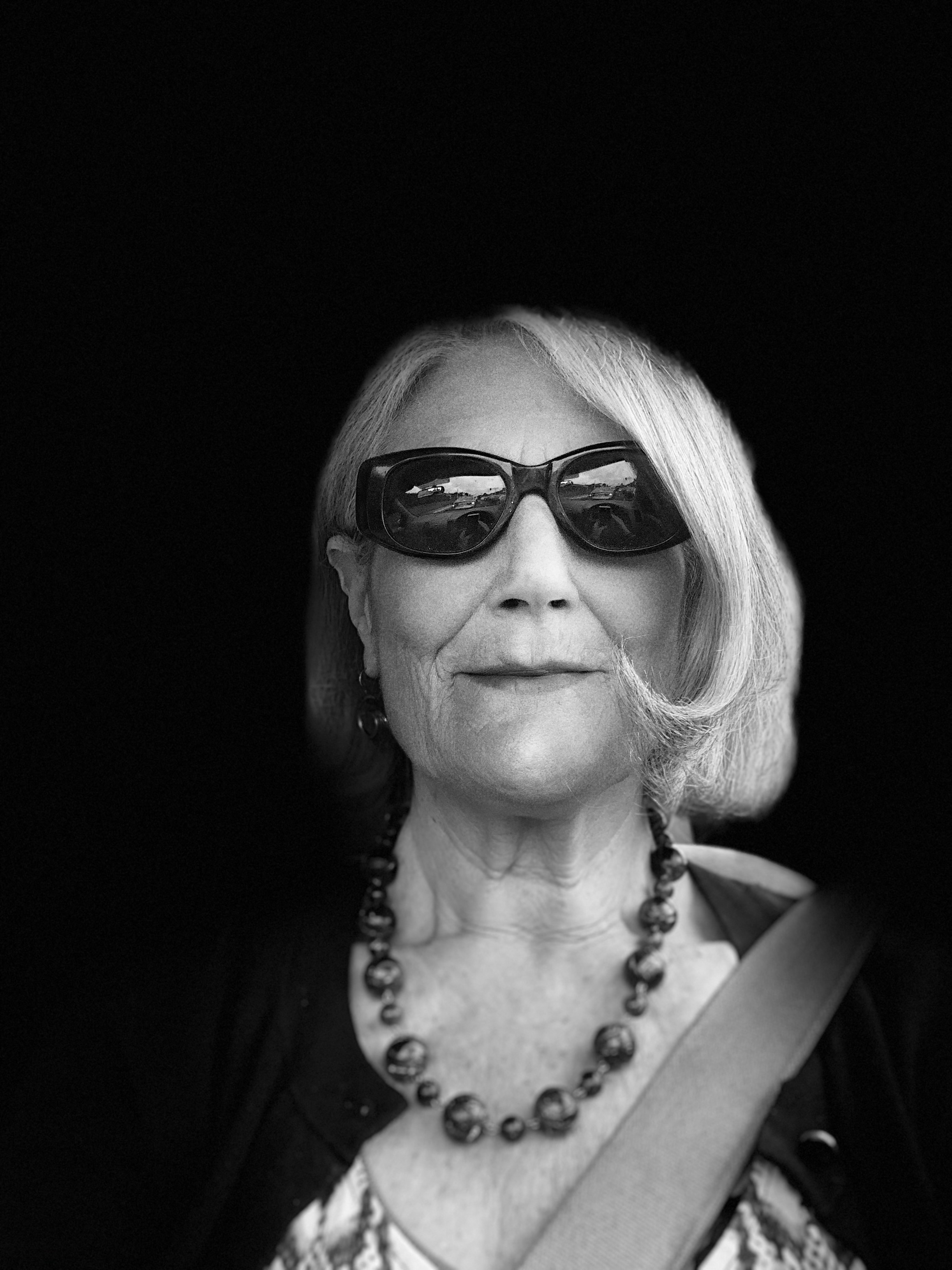
Lisa Black proofreads the dead-tree edition of the Weekly, and writes culture stories for her column Paint It Black.

